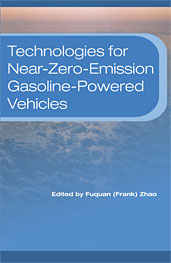Book

Technologies for Near-Zero-Emission Gasoline-Powered Vehicles
2006-10-23
Dr. Fuquan (Frank) Zhao and experts in the field address a broad spectrum of key research and development issues in the rapidly progressing area of near-zero-emission gasoline-powered vehicles. Written in response to the increasingly stringent emissions legislation, this book provides the reader with a concise introduction to technology developments in near-zero-emission gasoline-powered vehicles. The material reflects global technical initiatives within the automotive and research communities. In all, this book contains more than 450 pages, with nearly 200 descriptive diagrams and/or images. It will serve as a valuable desk reference and provide the basics for those who are interested in understanding this advancing technology.


